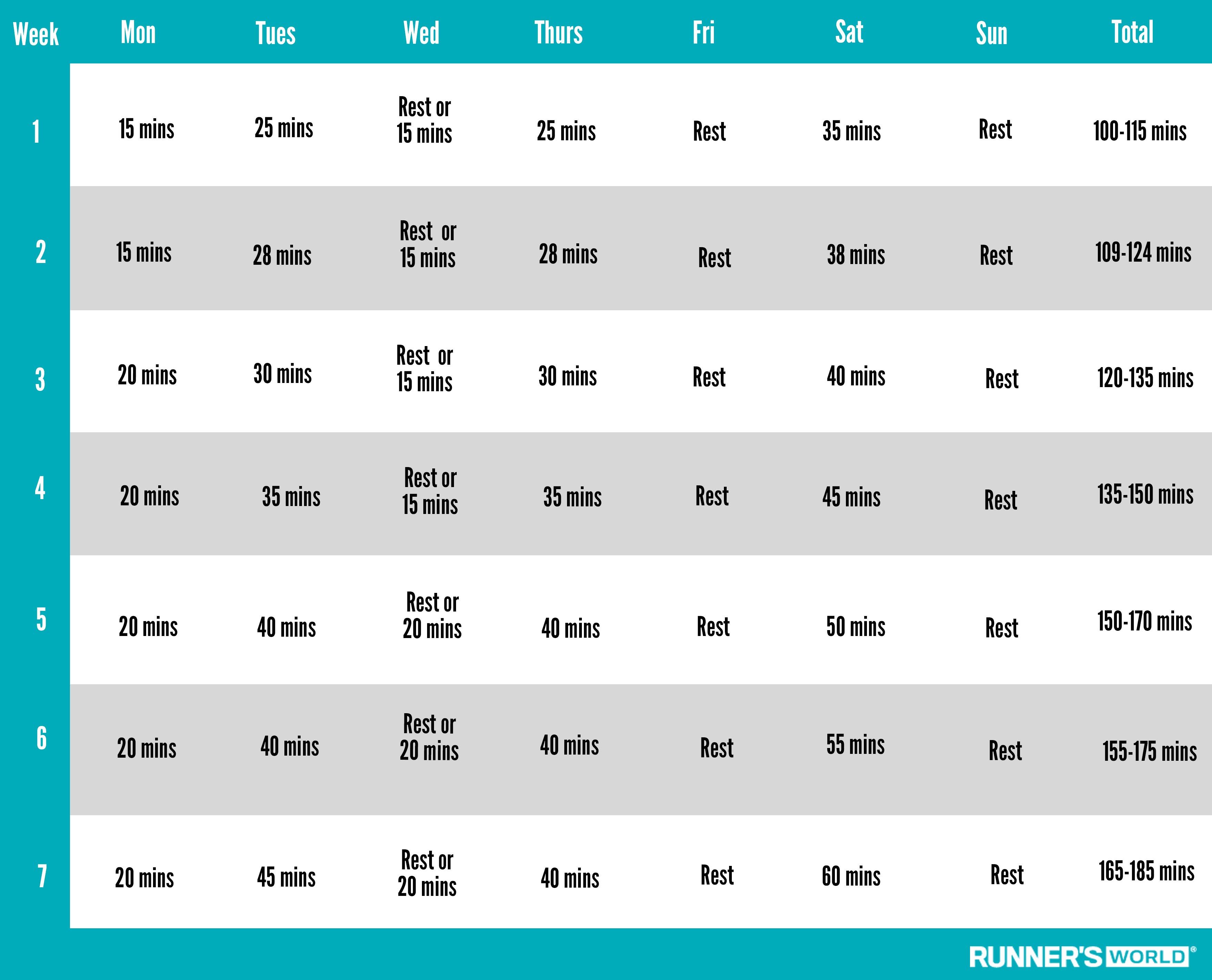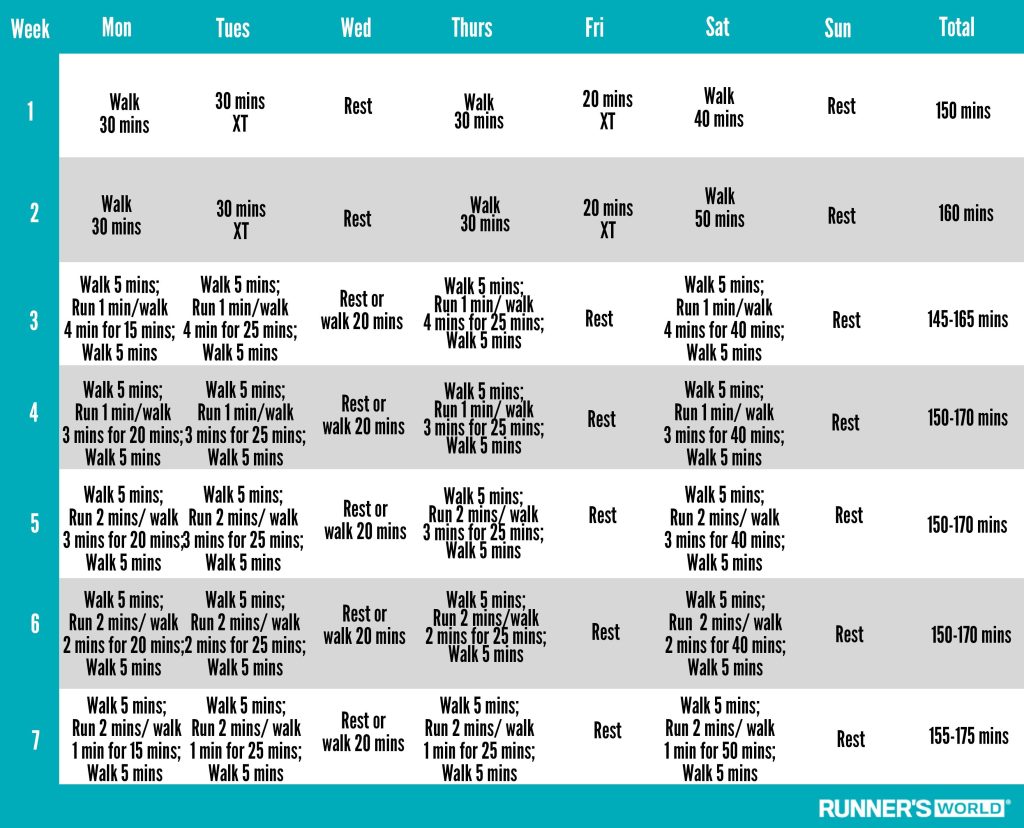Starting to run can seem tough. But it’s easier than you think.
Running is one of the best ways to improve your health and fitness. It can help you lose weight, boost your mood, and keep your heart strong. But how do you begin? Many people feel overwhelmed at the thought of running, especially if they are new to exercise.
The key is to start slow and build up gradually. With the right approach, you can make running a fun and rewarding part of your routine. This guide will show you how to start running safely and effectively, so you can enjoy all the benefits it has to offer. Ready to lace up your shoes and hit the pavement? Let’s get started!
Setting Goals
Starting a running journey is exciting. Setting clear goals is essential for success. Goals provide direction and keep you motivated. Without them, it is easy to lose focus. This section will guide you in setting effective goals.
Identify Your Why
Before you begin, understand why you want to start running. This will help you stay committed. Ask yourself:
- Do I want to improve my health?
- Am I training for a race?
- Do I need to reduce stress?
- Do I want to lose weight?
Knowing your personal reasons keeps you motivated. Write them down. Refer to them when you need a boost.
Set Smart Goals
To achieve success, set SMART goals. These are:
| Element | Description |
|---|---|
| Specific | Clearly define what you want to achieve. |
| Measurable | Ensure you can track your progress. |
| Achievable | Set realistic goals that are within your reach. |
| Relevant | Make sure your goals align with your reasons. |
| Time-bound | Set a deadline for achieving your goals. |
Here is an example of a SMART goal:
Run 5 kilometers without stopping in 3 months.
This goal is specific, measurable, achievable, relevant, and time-bound.
Setting goals is the first step in your running journey. Stay focused on your why and follow your SMART goals. Good luck!
Choosing The Right Gear
Starting a running journey is exciting. Choosing the right gear is crucial. Proper gear helps you stay comfortable and avoid injuries. Let’s explore the essentials.
Running Shoes
Running shoes are the most important gear. They need to fit well. Good shoes provide support and cushioning. Visit a store specializing in running shoes. They can help you find the perfect pair. Consider your foot type and running style. Replace your shoes every 300-500 miles. Worn-out shoes can lead to injuries.
Comfortable Clothing
Wear comfortable clothing for running. Choose moisture-wicking fabrics. These keep you dry and cool. Avoid cotton as it absorbs sweat. In colder weather, dress in layers. Wear a base layer to wick moisture. Add a middle layer for insulation. Top it off with a windproof jacket. Don’t forget a hat and gloves. In warmer weather, wear light-colored, breathable clothes. A hat and sunglasses can protect you from the sun.
Creating A Training Plan
Starting to run can feel overwhelming. A well-structured training plan can help. This guide will help you create a plan that suits your needs. Follow these steps to ensure a safe and effective start.
Start Slow
Do not rush your running journey. Begin with a walk-run method. For instance, walk for 2 minutes, then jog for 1 minute. Repeat this cycle for 20 minutes. Gradually increase the jogging time each week.
- Week 1: Walk 2 mins, jog 1 min
- Week 2: Walk 1.5 mins, jog 1.5 mins
- Week 3: Walk 1 min, jog 2 mins
This gradual increase allows your body to adapt. It minimizes the risk of injury. Remember, consistency is key.
Incorporate Rest Days
Rest days are crucial for recovery. They help your muscles repair and grow stronger. Aim for at least two rest days per week. This prevents overtraining and reduces the risk of injury.
Here is a sample weekly schedule:
| Day | Activity |
|---|---|
| Monday | Run |
| Tuesday | Rest |
| Wednesday | Run |
| Thursday | Rest |
| Friday | Run |
| Saturday | Cross-Train |
| Sunday | Rest |
On rest days, focus on light activities. Consider stretching or yoga. This keeps your body active without overexerting it.
Creating a balanced training plan is essential. It ensures you progress steadily without burnout. Follow these tips to enjoy a safe running journey.

Credit: www.runnersworld.com
Proper Running Technique
Starting to run can be both exciting and challenging. Proper running technique is crucial for avoiding injuries and improving performance. By focusing on posture and breathing, you can enhance your running experience and make it more enjoyable.
Posture
Maintaining good posture while running is essential. Keep your head up and look forward. Your shoulders should be relaxed, not hunched. Stand tall with your chest open to improve oxygen flow. Avoid leaning too far forward or backward. A slight forward lean from the ankles is ideal. Your arms should swing naturally at your sides, not crossing your body. Keep your elbows bent at about 90 degrees.
Breathing
Proper breathing can make a big difference. Breathe deeply from your belly, not your chest. Try to maintain a steady breathing rhythm. Inhale through your nose and exhale through your mouth. This helps to control your breath and prevent side stitches. Match your breathing to your steps. For example, inhale for three steps and exhale for two. This can help you stay calm and focused.
Nutrition And Hydration
Proper nutrition and hydration are essential for anyone starting to run. They help improve performance, boost energy, and aid in recovery. Understanding what to eat and drink can make your running experience more enjoyable and effective.
Pre-run Fuel
Eating the right food before a run is important. Choose light, easily digestible meals. Avoid heavy, greasy foods. A banana or a slice of toast with peanut butter works well. These provide quick energy without weighing you down.
Hydrate before you start. Drink a glass of water 30 minutes before running. This keeps you hydrated and helps prevent cramps.
Post-run Recovery
Recovery after a run is just as important. Your body needs nutrients to repair and grow stronger. Eat a balanced meal with protein and carbs within 30 minutes of finishing. Greek yogurt with fruit or a smoothie is a good choice.
Rehydrate after running. Drink water or a sports drink to replenish lost fluids. This helps prevent dehydration and speeds up recovery.

Credit: www.nytimes.com
Staying Motivated
Starting to run can be exciting, but staying motivated can be tough. It’s common to lose motivation after a few weeks. Here are some tips to keep you going strong on your running journey.
Track Your Progress
Tracking your progress can be very motivating. Seeing your improvement over time can give you a sense of accomplishment.
- Use a Running App: Apps can track your distance, time, and pace. Many apps also offer challenges and rewards.
- Keep a Journal: Write down how you felt after each run. Note the weather and what you ate. This can help you see patterns and improve.
- Set Small Goals: Small goals can be more achievable and less daunting. Celebrate each milestone, no matter how small.
Find A Running Buddy
Running with a friend can make the experience more enjoyable. A running buddy can also hold you accountable.
- Join a Running Group: Many communities have running groups. This can help you meet new people and stay motivated.
- Schedule Runs Together: Plan regular runs with your buddy. This creates a routine and makes skipping runs harder.
- Share Your Progress: Compare notes and encourage each other. This can create a healthy competition and boost motivation.
Remember, the key to staying motivated is to make running enjoyable and rewarding. Keep track of your progress and find a buddy to share the journey with.
Overcoming Common Challenges
Starting a running routine can be daunting. Many face common challenges that hinder their progress. Understanding and addressing these can make your running journey smoother and more enjoyable. Let’s dive into two major challenges: avoiding injuries and dealing with weather.
Avoiding Injuries
Injuries can derail your running plans. It’s crucial to take steps to avoid them. Here are some tips to keep you on the safe side:
- Warm Up Properly: Always start with a warm-up. This prepares your muscles for the run.
- Start Slow: Don’t push yourself too hard at the beginning. Increase your pace gradually.
- Wear Proper Shoes: Invest in good running shoes. They provide the necessary support.
- Listen to Your Body: If you feel pain, stop and rest. Pushing through pain can lead to serious injuries.
- Maintain Good Form: Keep your back straight and avoid over-striding. Proper form reduces the risk of injuries.
These steps can significantly reduce your risk of injuries. Consistency and caution are key.
Dealing With Weather
Weather can be a big challenge for runners. Each weather condition requires a different approach.
| Weather Condition | Tips |
|---|---|
| Hot Weather | Run early in the morning or late in the evening. Stay hydrated and wear light clothing. |
| Cold Weather | Dress in layers to stay warm. Protect your extremities with gloves and a hat. |
| Rainy Weather | Wear water-resistant clothing. Avoid cotton as it absorbs water. |
| Windy Weather | Run against the wind first. This way, you have the wind at your back on the return. |
By preparing for different weather conditions, you can run comfortably and safely throughout the year.

Credit: www.marathonsports.com
Celebrating Milestones
Starting to run is a big step. Celebrating milestones can help keep you motivated. Small wins matter. Celebrate each one. This will make your journey enjoyable.
Reward Yourself
Rewards can boost your motivation. Treat yourself after a week of running. Buy new running shoes after a month. Small rewards make a big difference.
Share Your Success
Tell others about your achievements. Share your progress on social media. Join a running group. Sharing your success can inspire others. It also keeps you accountable. Celebrate together!
Frequently Asked Questions
How Do I Start Running As A Beginner?
Begin with short, manageable distances. Gradually increase your pace and duration over time. Consistency is key.
What Equipment Do I Need To Start Running?
You need a good pair of running shoes, comfortable clothing, and a water bottle. Start simple.
How Often Should Beginners Run?
Beginners should aim to run three times per week. Ensure you allow rest days for recovery.
How Can I Avoid Injuries When Running?
Warm up before running and cool down afterward. Focus on proper form and listen to your body.
Conclusion
Starting to run can be easy and fun. Remember to set small goals. Warm up before you start. Listen to your body. Stay hydrated. Wear proper shoes for comfort. Mix walking with running at first. Find a buddy to join you.
Enjoy the journey and be patient. Progress happens over time. Running can boost your health and mood. Now, lace up your shoes and begin!



